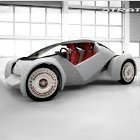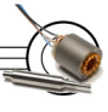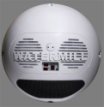
The latest technology inventions in 3d printing are rapidly changing how things are being made.
It's an emerging technology that is an alternative to the traditional tooling and machining processes used in manufacturing.
At the International Manufacturing Technology Show in Chicago, a little known Arizona-based car maker created a media sensation by manufacturing a car at the show.
It was a full scale, fully functional car that was 3d printed in 44 hours and assembled in 2 days.
The car is called a "Strati", Italian for layers, so named by it's automotive designer Michele Anoè because the entire structure of the car is made from layers of acrylonitrile butadiene styrene (A.B.S.) with reinforced carbon fiber into a single unit.
The average car has more than 20,000 parts but this latest technology reduces the number of parts to 40 including all the mechanical components.
“The goal here is to get the number of parts down, and to drop the tooling costs to almost zero.” said John B. Rogers Jr., chief executive of Local Motors, a Princeton and Harvard-educated U.S. Marine.
“Cars are ridiculously complex,“ he added, referring to the thousands of bits and pieces that are sourced, assembled and connected to make a vehicle.
"It's potentially a huge deal," said Jay Baron, president of the Center for Automotive Research, noting that the material science and technology used by Local Motors is derived from their partnership with the U.S. Department of Energy’s Manufacturing Demonstration Facility at the Oak Ridge National Laboratory in Oak Ridge,Tennessee.
This technology can use a variety of metal, plastic or composite materials to manufacture anything in intricate detail.
People tend to want what they want, when they want it, where they want it, and how they want it, which makes this technology disruptive in the same way digital technologies used by companies like Amazon and Apple disrupted newspaper, book and music publishers.
Imagine if you could customize and personalize your new car online and pick it up or have it delivered to you the next day at a fraction of the cost of buying one from a dealership?
What if you could make a fender for a Porsche, or a tail light for a Honda, for a fraction of the cost of buying from a parts supplier? How revolutionary would that be for the automotive industry?
It's already happening.
Jay Leno, the former Tonight Show Host and avid car enthusiast is famous for his collection of vintage automobiles.
One of the challenges with collecting antique cars is replacing parts. You can't buy them because they're obsolete and having a machinist tool the part doesn't always work and often requires costly modifications until the part fits.
So Leno uses 3d printing technology to make parts for his cars. "These incredible devices allow you to make the form you need to create almost any part", says Leno.
John B. Rogers Jr. believes that in the near future a car will be made in just 60 minutes.
The company is already organizing a worldwide network of "Microfactories" where you can order and pickup your personalized, customized car.






































